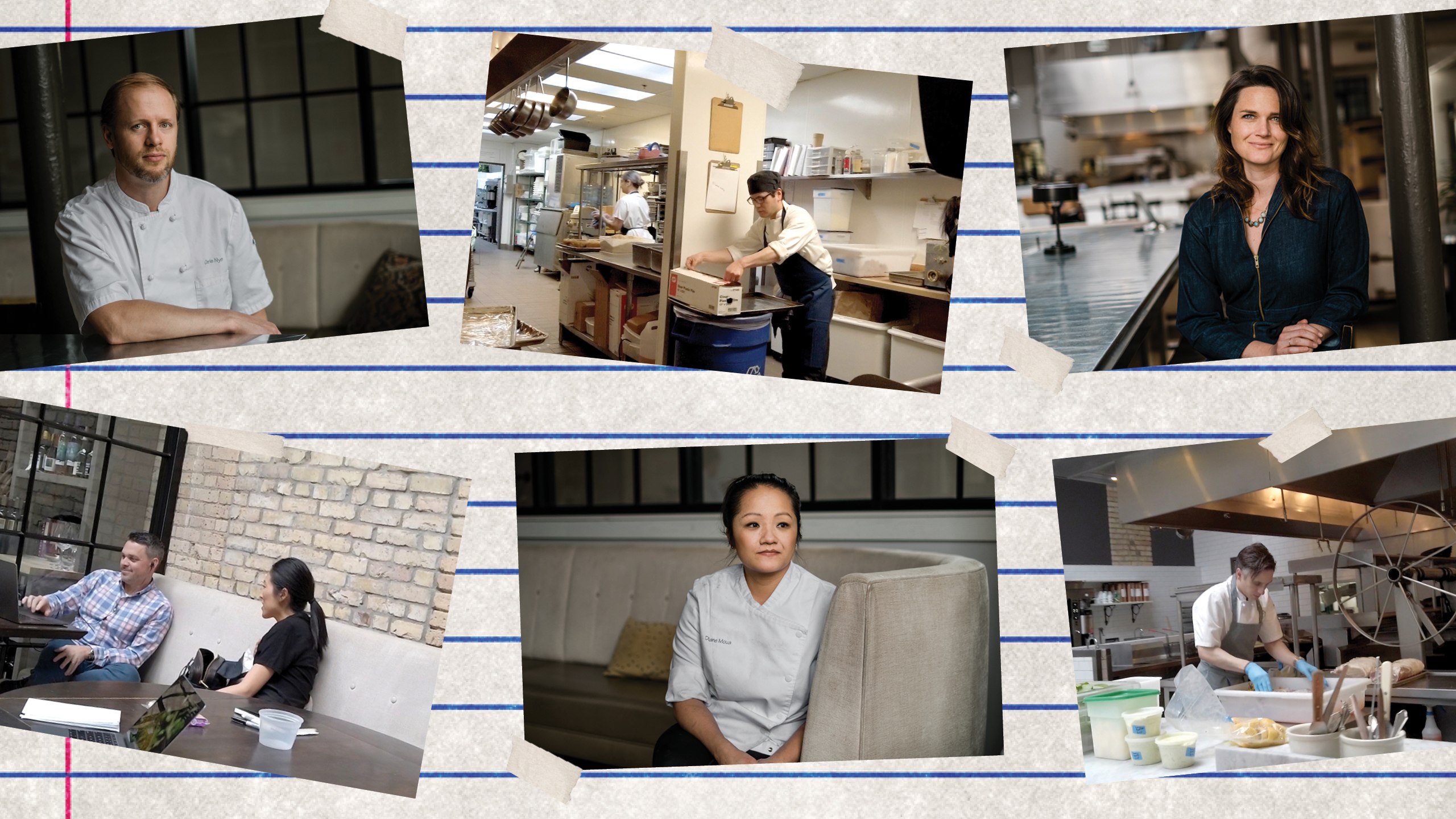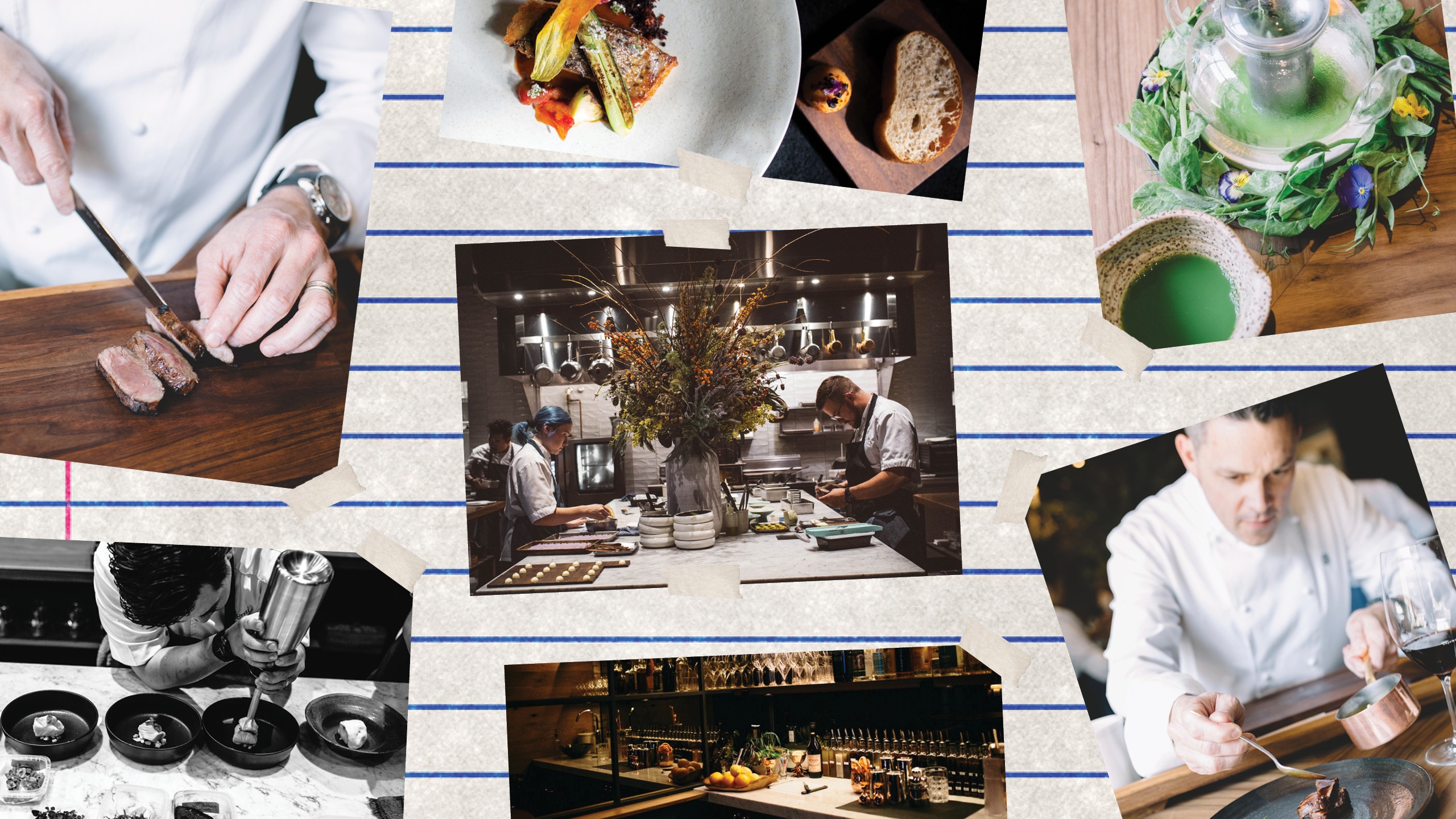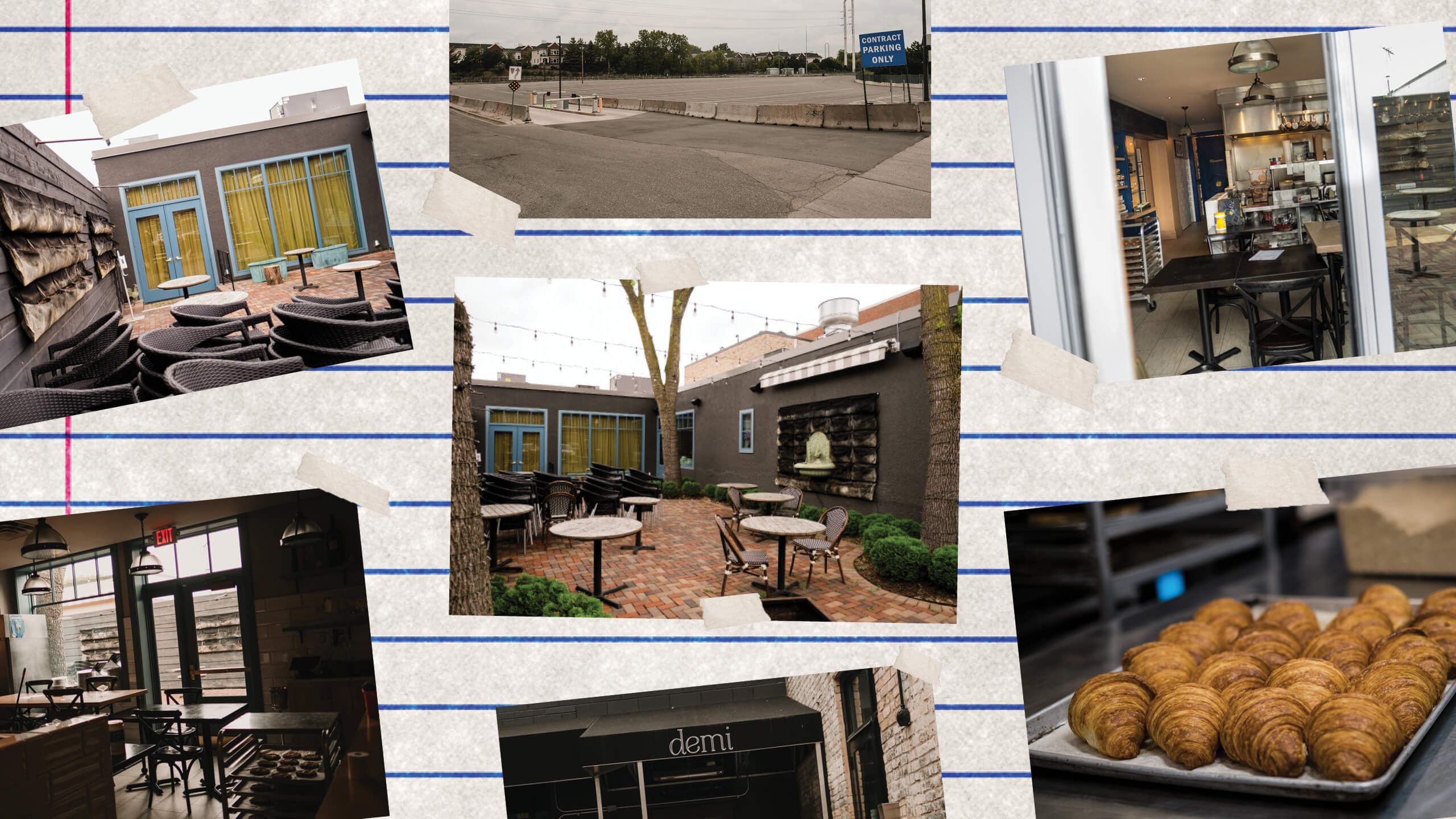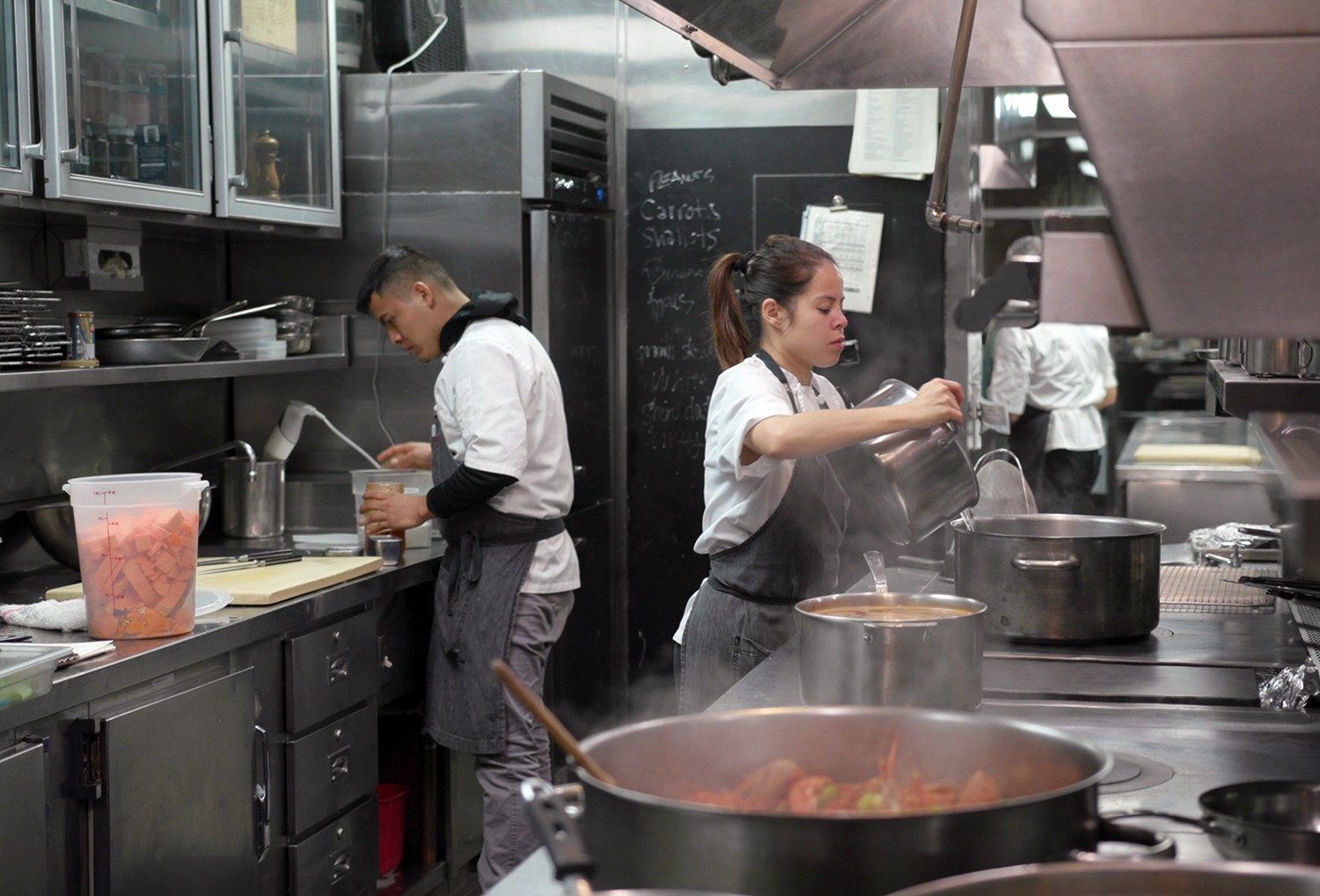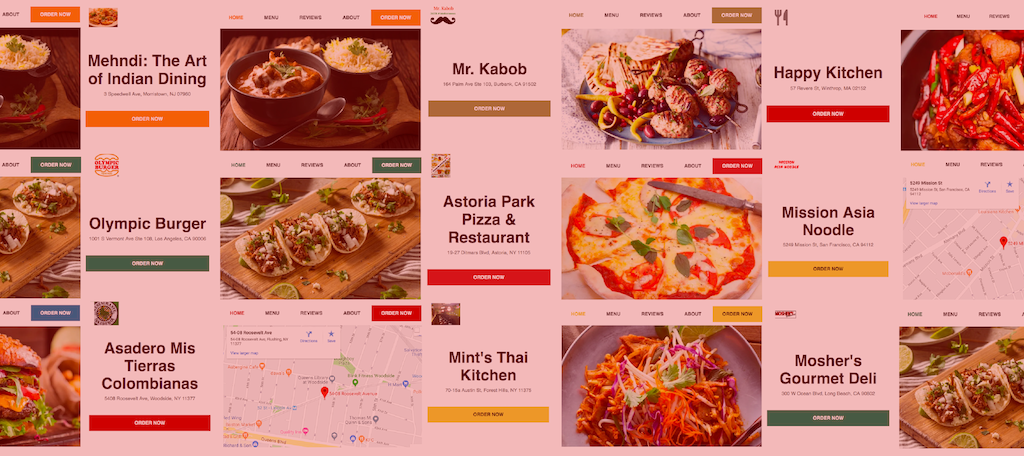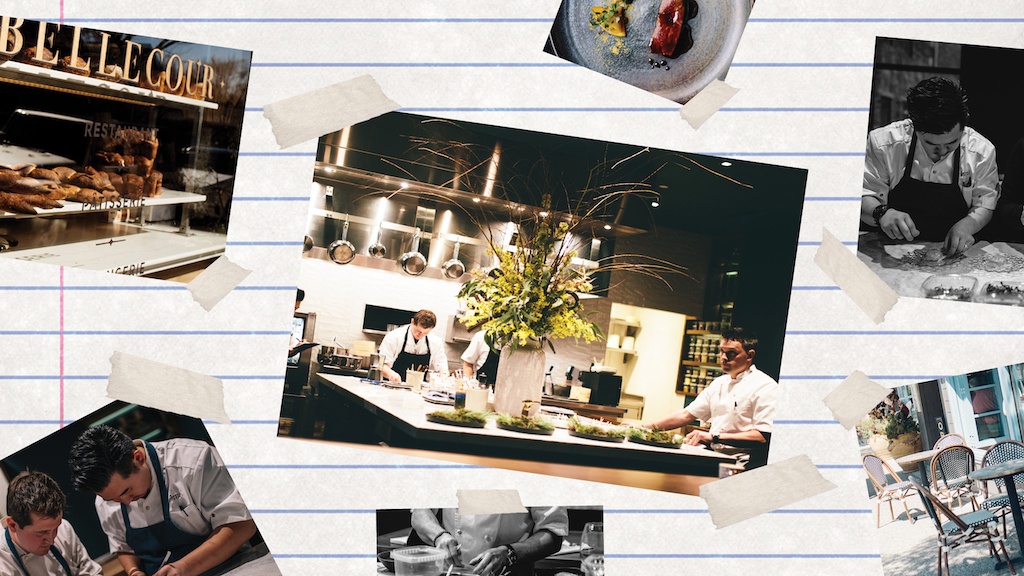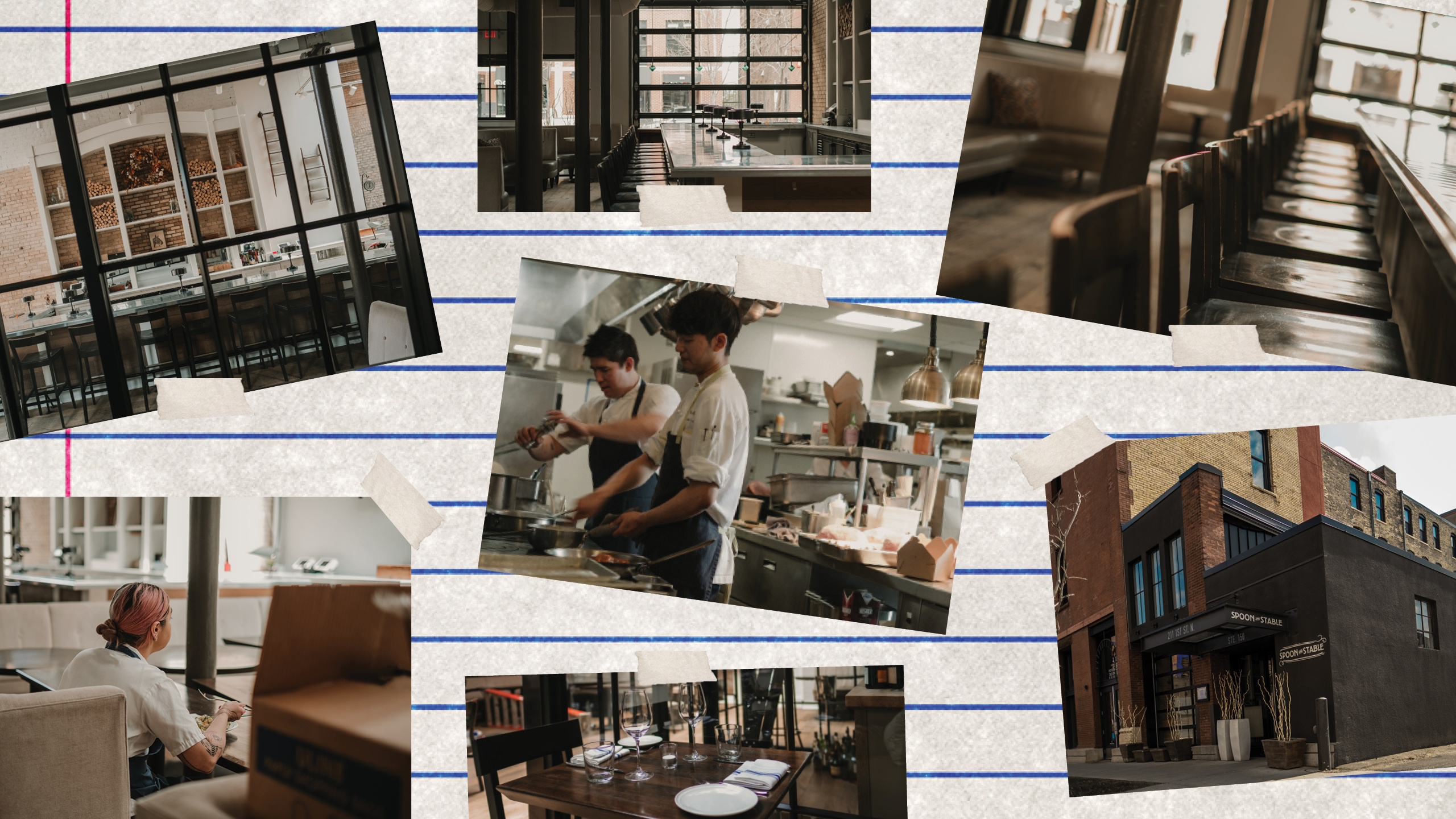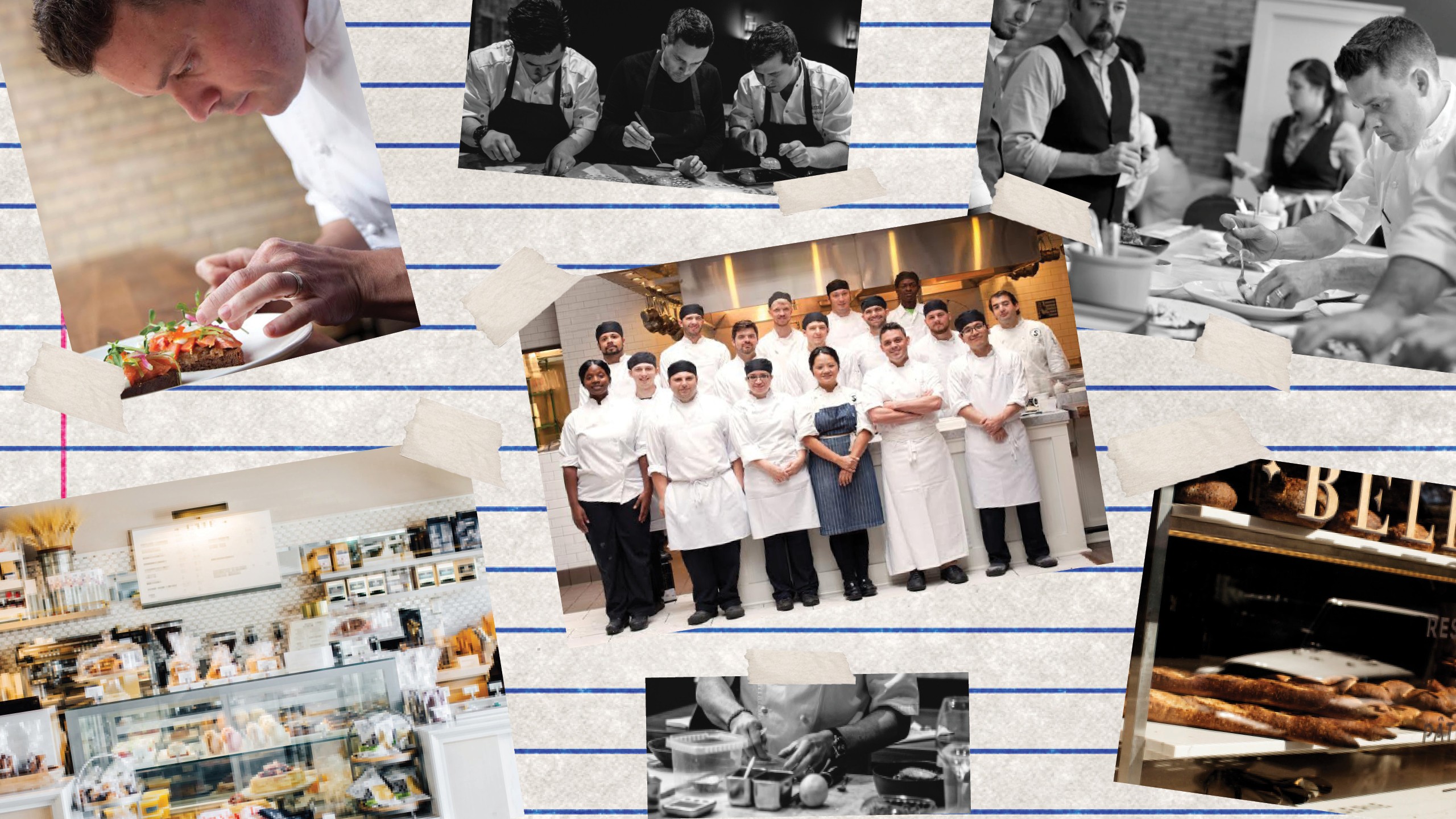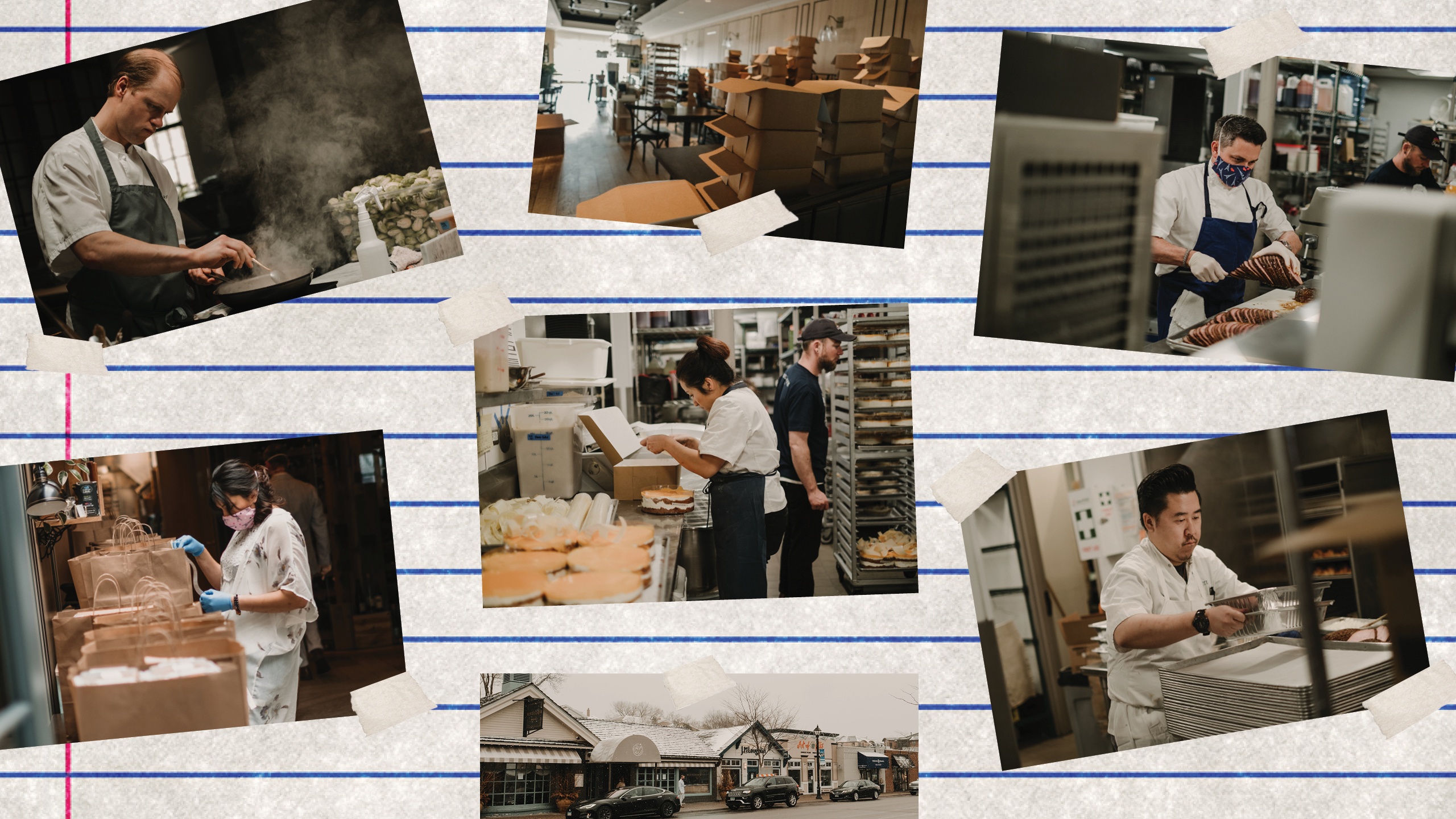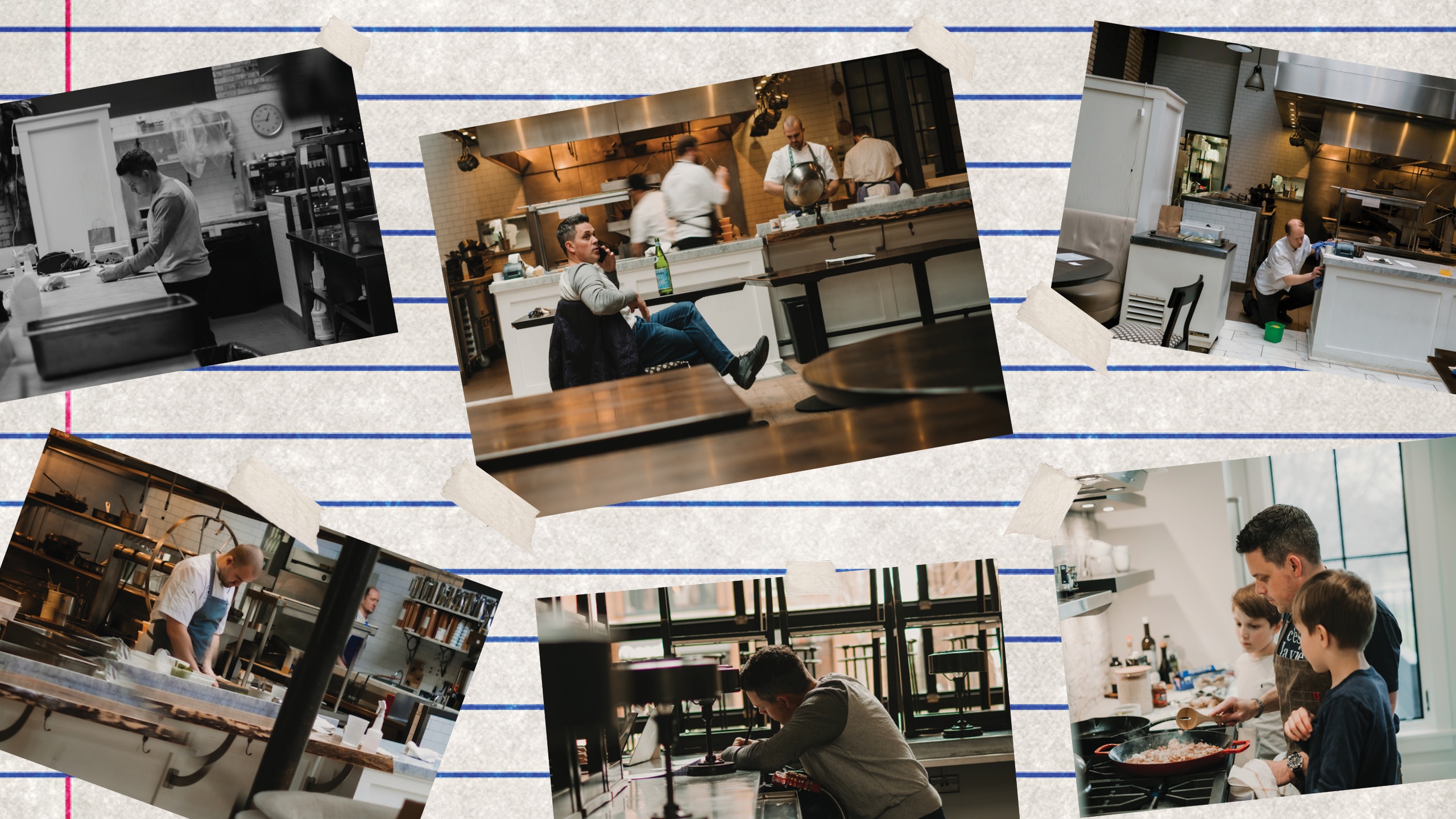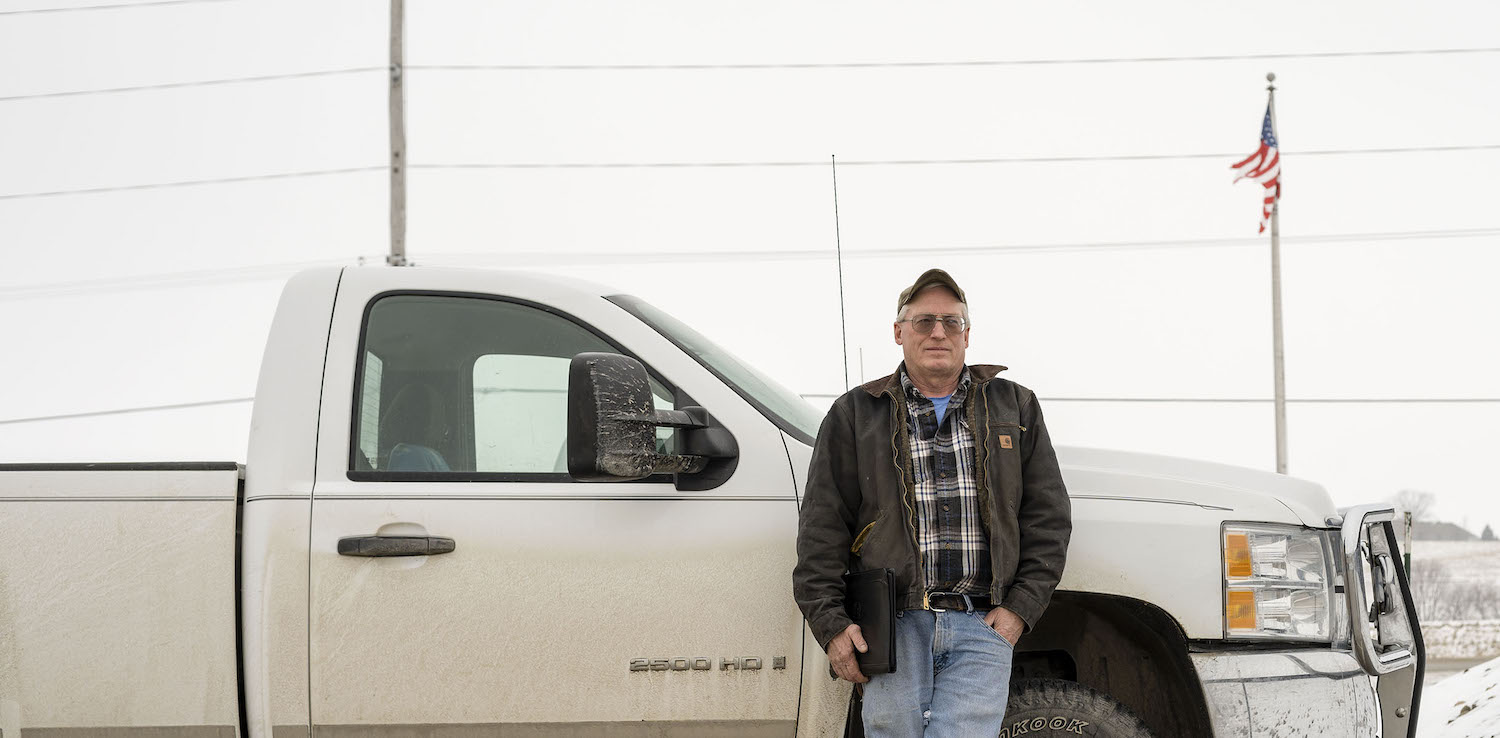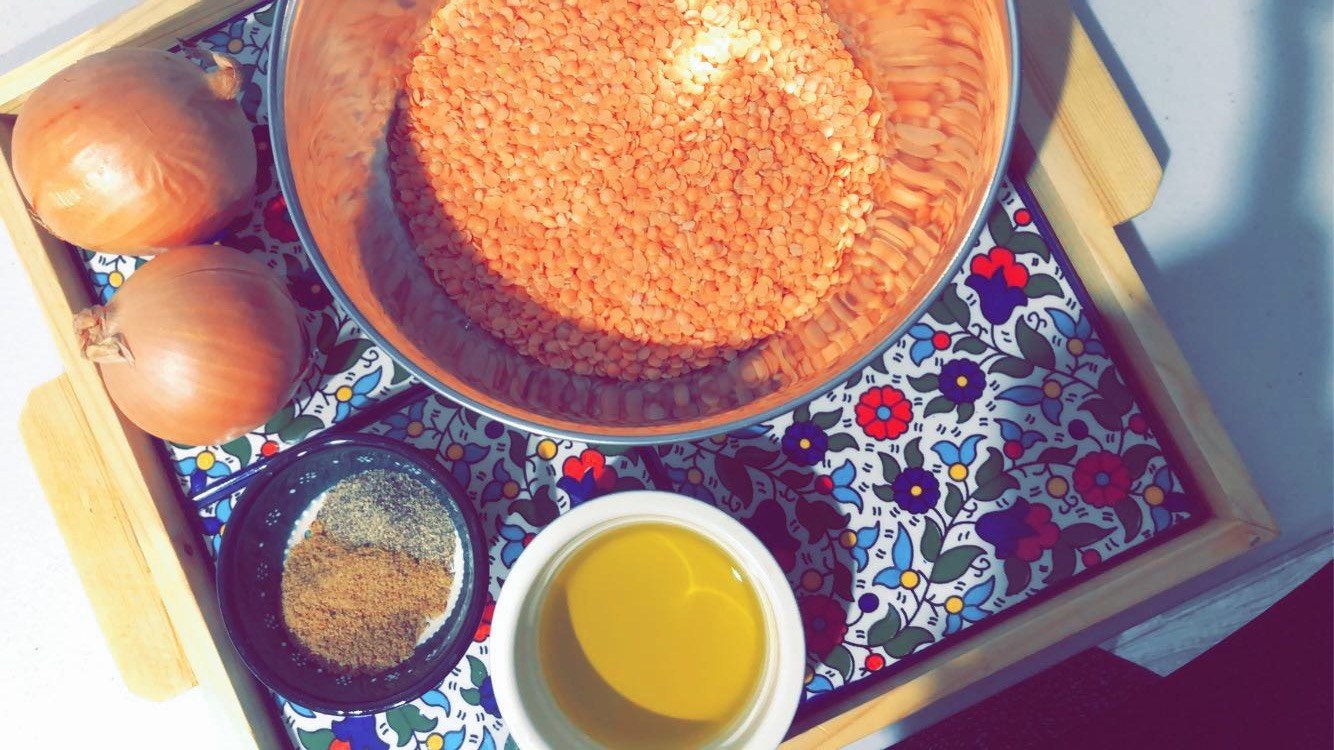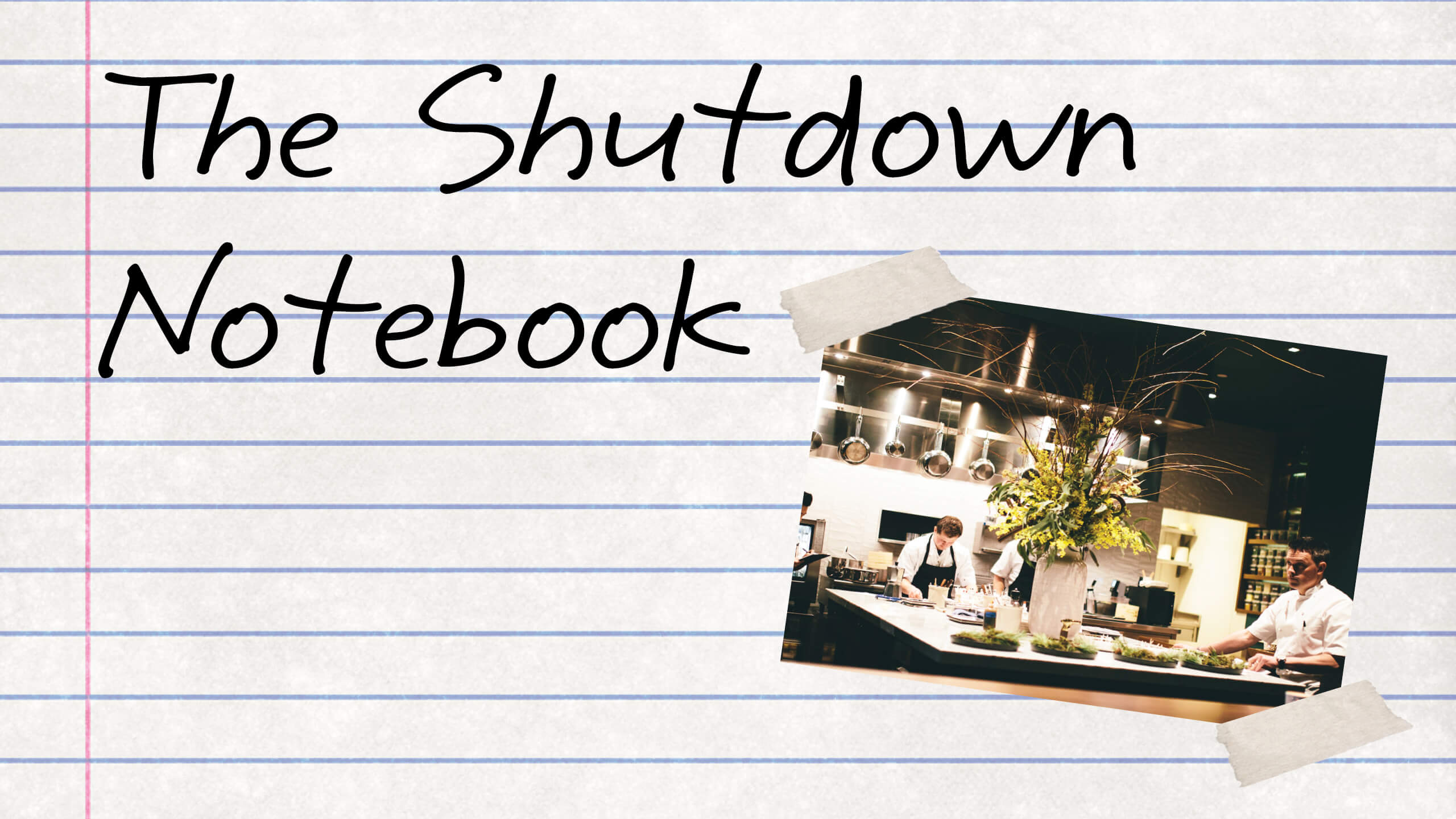
Photo by Libby Anderson/Flickr/Nicolas Raymond/Graphic by Talia Moore
A weekly series about one chef who closed three restaurants during the pandemic—and intends to get them back.
An official-looking person knocks on your door to inform you that as of today, you can no longer do the job you love doing, and no, there’s no definite end-date in sight. Hang it up for now; find something else.
You can consider a tangential job, one that’s deemed less of a national threat, but there’s a narrow range of options, particularly for people in the arts. Ballet dancers can videotape The Dying Swan in the kitchen while they wait for unemployment checks, but forget a stage, and other dancers, and an audience. Rappers can rap into the void. Stand-ups can stand or sit, but there’s no way to know if they’re killing it.
A chef’s best hope, these days, is to be an animate food delivery system, assuming that he or she has managed to transform a comatose restaurant into a viable take-out and delivery service. As one exalted and exhausted chef recently told me, he has abandoned any signature dish that’s best consumed within five minutes of coming off the fire, and is learning to plate in a take-out container. His art is on hold, as Covid-19 narrows the definition of creativity to what holds up in transit. And nobody sees the end: Most chefs are in week seven of their generation’s version of Prohibition.
To make matters worse, restaurants seem to be commerce’s stepchild, the misfit offspring, banging on Congress’ door to ask for help because the government’s current concept of bailout fits as badly as someone else’s chef’s coat.
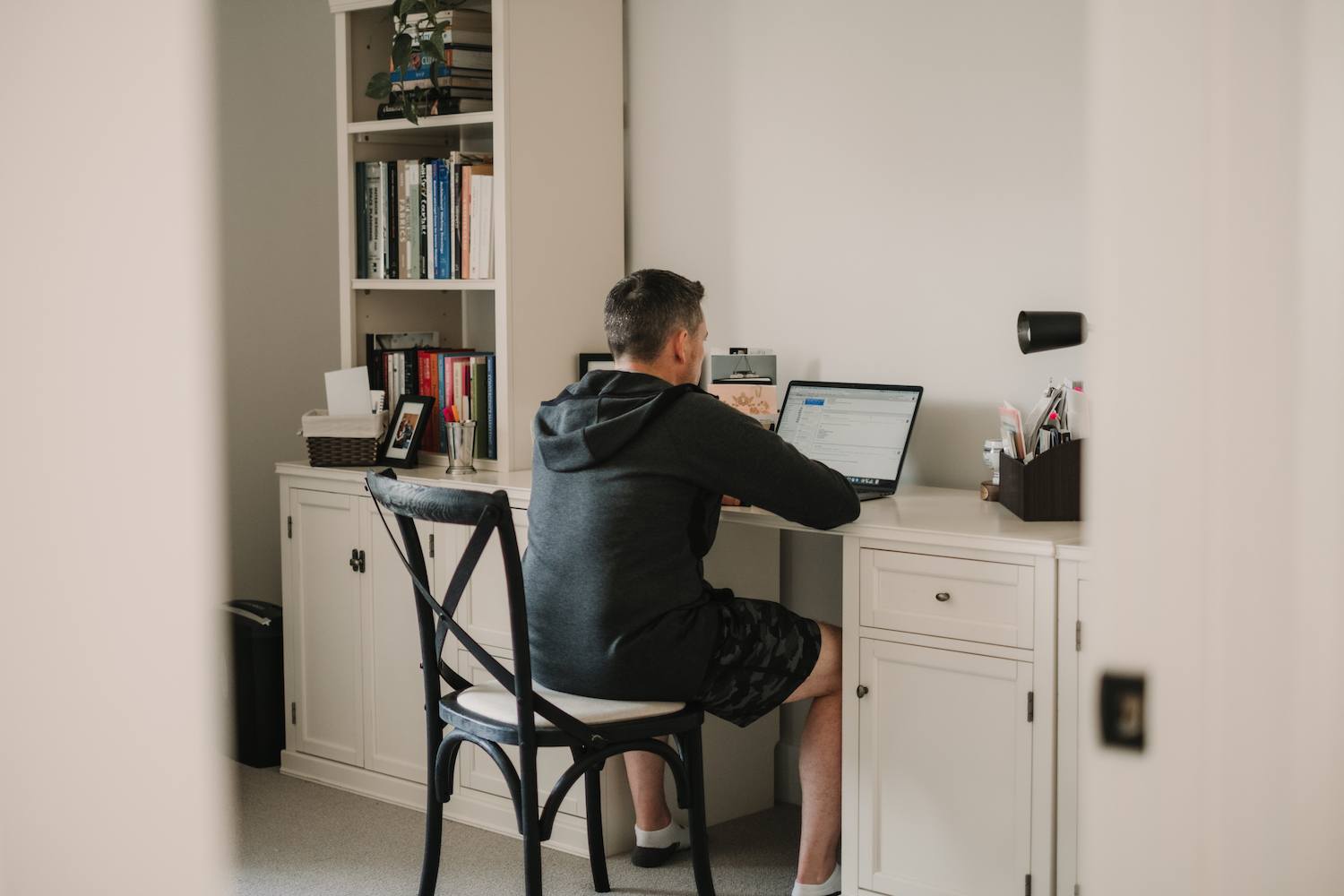
Gavin Kaysen sits in his home office responding to the hundreds of emails that fill his inbox.
Dave Puente
Robbed of the work you’re passionate about, what would you do? Psychiatrist Elisabeth Kübler-Ross famously identified the five stages of grief—denial, anger, bargaining, depression, acceptance—but restaurant owners don’t have the luxury of stages because they’re in limbo between loss and potential rebirth. If they want a second act they have to stash the grim feelings and keep moving forward.
Gavin Kaysen lost track of what day it was for the first time, last week. He faced an inbox with hundreds of emails, and not just skim-and-ditch messages but questions that required a thoughtful response. He looked for the bright side of every exchange and found it more often than not, but it’s a struggle. Week in and week out, someone keeps moving the finish line.
No one predicts a V-shaped recovery for restaurants. On the bad days, restaurant owners aspire to a U-shaped future, a slower uptick—and on the worst days, they know that some of them will end up flat-lined, in the oxymoron known as an L-shaped recovery.
In the meantime there’s a lot of hurry up and wait, speculative conversations with colleagues, a few contentious conversations with suppliers, some big bills called due and some smaller ones, negotiated. Kaysen gets by with a defiant logic: Running restaurants is what he does, and he has to do something; therefore, he’ll run restaurants.
—
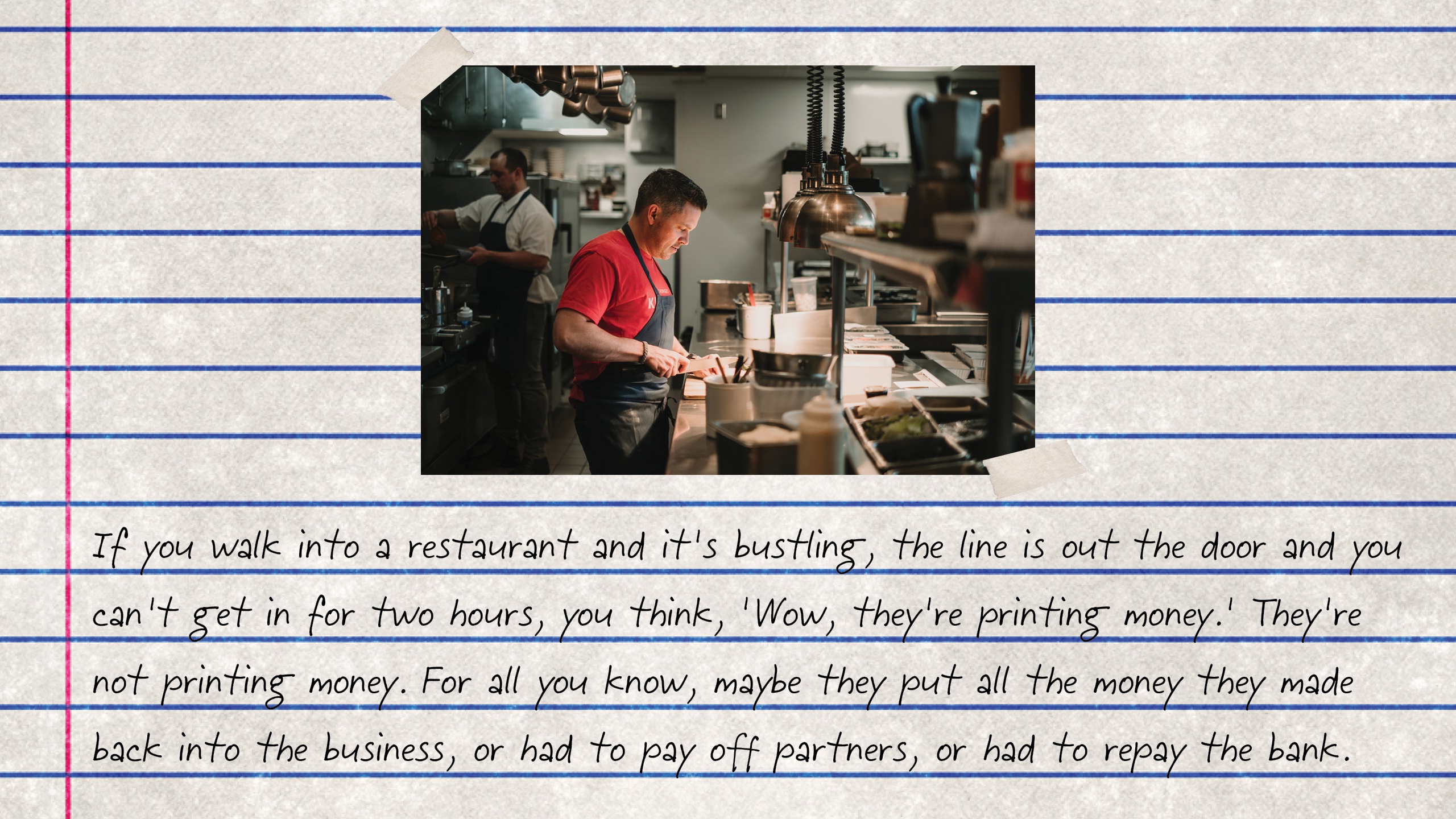
Dave Puente/Nicolas Raymond/Flickr/Graphic by Talia Moore
Cutting through the bullshit
When you talk to other restaurateurs, if you don’t know them too well you make small talk. Minnesota, you always talk about the weather. And then it’s how are you, and they say, ‘Oh, things are great, our business is up 20 percent,’ or even now, with the virus, it’s ‘We’re killing it with the take-out business, it’s great.’ And I think, Really? I wonder if it’s true, or are they afraid to say it’s not working?
It’s what we’ve inherently done, it’s ingrained in our restaurant culture, and it’s part of why it’s important to educate the public about those razor-thin margins they always hear about. If you walk into a restaurant and it’s bustling, the bar is three deep, the line is out the door and you can’t get in for two hours, you think, ‘Wow, they’re printing money.’ They’re not printing money. For all you know, maybe they put all the money they made back into the business, or had to pay off partners, or had to repay the bank.
It’s hard for us to talk about. It’s personal, it’s private. We don’t know how to deal with the public perspective, and that sometimes holds us back from asking for help, or communicating what things are really like. We worry: Maybe we’ll look weak, or less, to our competitors.
In the last six weeks, in my community here, there’s less of a guard. More of my quote unquote competitors are more open in a group setting, willing to talk about how we’re going to survive. And I think it’s healthy to be a little vulnerable.
Otherwise we’re controlling what is essentially a false public image of what’s happening. Spoon and Stable? I’ll be the first to tell you, Saturday night take-out is busy, it does a great job. Does it make the revenue we used to make? Not even close. Wednesday night it’s not even worth opening the doors, but we’re still going to open the doors.
That’s the reality. What we used to make in one day we almost make in one week, in revenue.
—
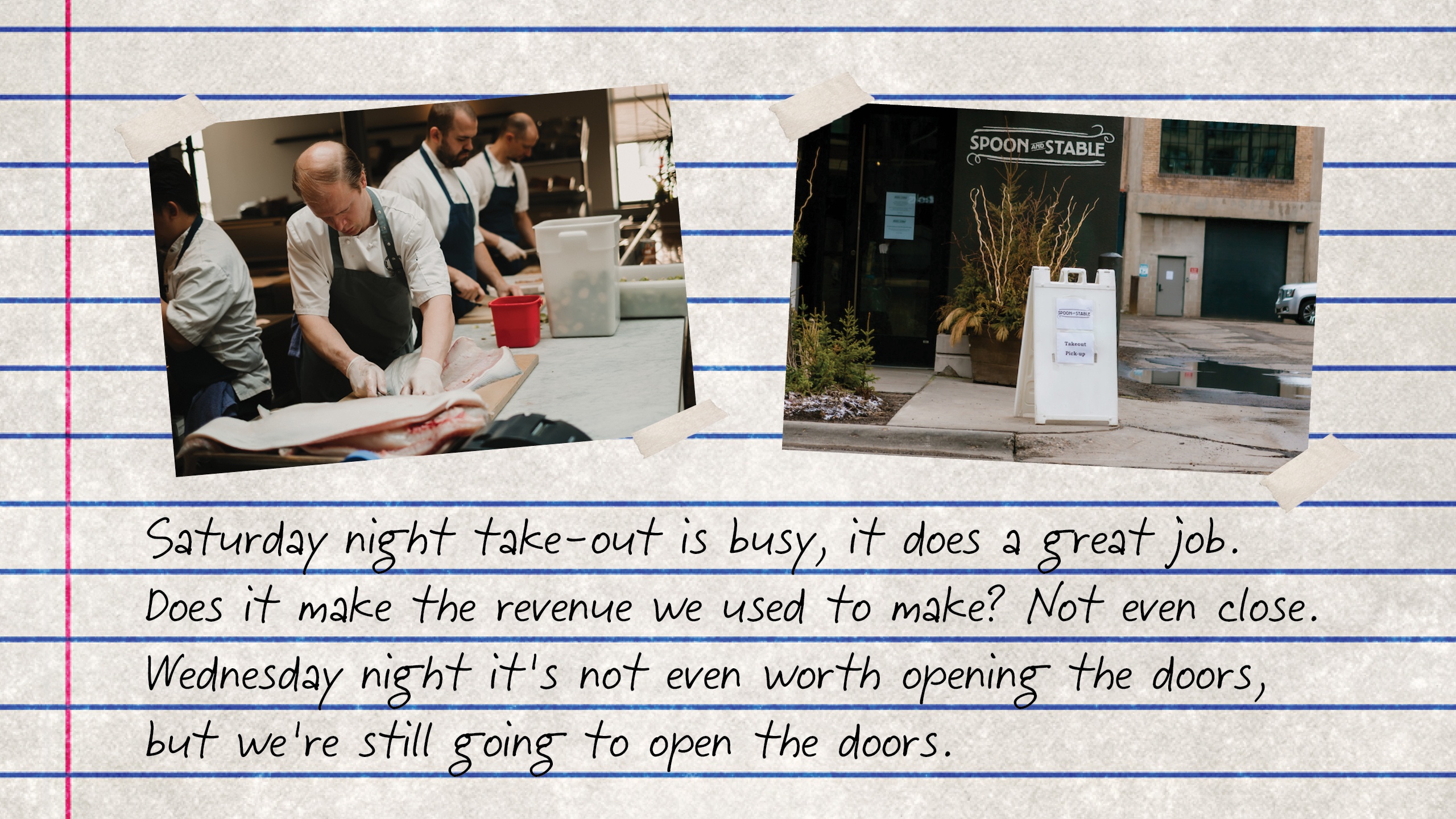
Dave Puente/Nicolas Raymond/Flickr/Graphic by Talia Moore
Holding it together
Last week I spent a whole day at home, had a webinar from 7:30 to noon, took a shower, went back to my home office to deal with emails and phone calls. Before I knew it, it was 5:30 or 6 and I had to make dinner. I woke up the next morning and thought, it’s Monday, because the only day I’m usually at home all day is Sunday.
So I said to Emile, my older son, Hey, a new week. And he said, No. It’s Wednesday.
It’s becoming tiring. I’m looking at everything I’ve been able to build, with the teams at all the restaurants, what we’ve achieved, and it’s been stripped away. I can’t do it anymore. Take-out fills a small part, for me, but not enough to make it really gratifying; it does what it does. The hard part, for me, is trying not to think about the emotional loss too much, because it becomes pretty depressing—all the time, energy, work, gone.
I don’t know how to think about it. I don’t know how I feel about it.
I want to hold onto things, step by step, look for incremental progress. It’s such a sports cliché, but it’s true: I have a group of friends who are pro athletes, and I always give them a hard time when I see them being interviewed, because it’s always the same cliché, ‘I take things game to game,’ or ‘day by day.’ I’ll text them to say you should’ve told them the dinner you had at Spoon and Stable last night helped you win the game, but I’ll let it slide this time because you’ve all had media training.
But now I realize that it’s true: I have to take this day by day. What do I have to achieve today to set me up to be better tomorrow? It helps me prioritize and categorize.
—
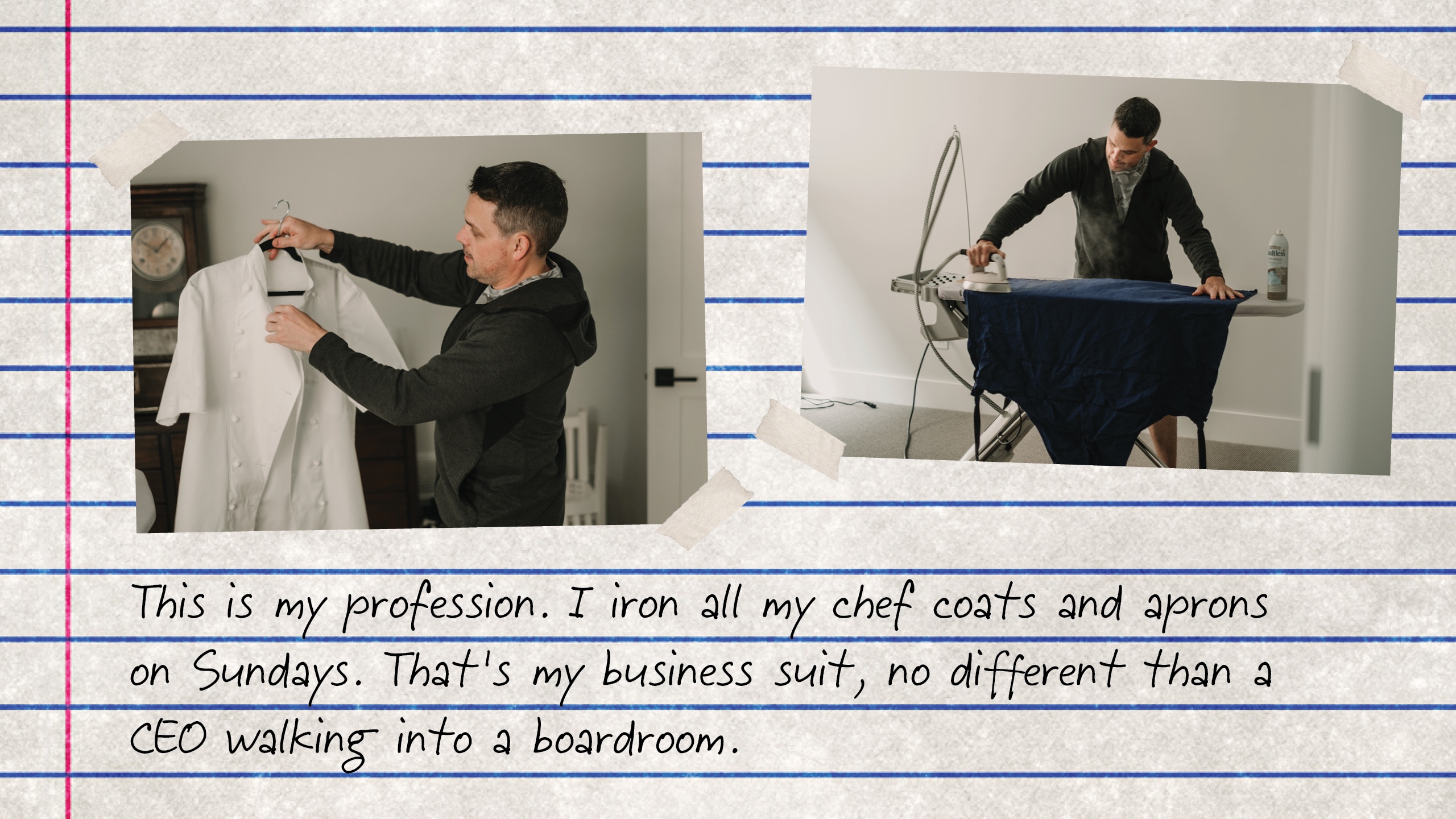
Dave Puente/Nicolas Raymond/Flickr/Graphic by Talia Moore
The CEO suit
If I could take a crystal ball, look ahead and open a space that’s serving food, I wouldn’t change the principles of what it looks like. But I do wish we could be considered the professionals we are, and not this misfit industry.
If you’re a cook, or a waiter, or a bartender, there’s this general sense: Guests ask, ‘What are you going to do after this?’ And the answer is, ‘This is what I do. I serve people,’ but the assumption is that this is temporary, not what you really want to do. Would you walk into a nursing home where people take care of elderly residents and ask them what they’re going to do after this? No.
When do we escape that stigma? It might not make it easier to do business, but it would give us a sense of confidence, that we belong in the community.
This is my profession. I iron all my chef coats and aprons on Sundays. That’s my business suit, no different than a CEO walking into a boardroom. My guests ask, ‘How do you run three restaurants, how can you be at all of them at once?’ I tell them I’m not at all of them at once—but have they wondered how the CEO of Best Buy runs all those Best Buys? I’m the CEO of a company, Soigné Hospitality. We have an executive team, and we have standards and protocols we abide by to provide a consistent, hospitality-driven experience for guests.
Often guests are taken aback by that, almost as though I’m being confrontational, because they don’t think of it that way.
But the chef who is the CEO, and who is artistic, also needs to have a business brain for the company to be profitable. We force ourselves to be both.
—
Cash flow
We have to re-do all the math, because this is a different scenario from actually opening a restaurant. When you have an opening budget, you plan for three to five months of working capital for payroll and expenses. One thing you don’t face is bills you haven’t paid and need to pay. We have to look at accounts payable—and while each restaurant is different, combine them and the total we owe is north of $100,000, just to get going.
We had to pay April sales tax, which was considerably lower than March. May tax, based on April sales, will be even lower, but we have to pay it. And we had to pay March.
We have vendors we’ve used in the past, and we’ve found out who we’d like to continue to work with and ones we would prefer never to use again. I got a notice from a big, national liquor company that if I don’t pay my bills I can’t buy more liquor—and in Minnesota you can get posted on a list and risk having your liquor license revoked. Other companies call and say they know what we’re going through and we can have an extra 60 days, which goes a long way. They’re probably diversified beyond restaurants enough to survive this: In fact, liquor stores are selling more than ever, so if they have those accounts they’re in better shape.
If prices go up a little bit, and that helps the small local farmer, gives them the profit margin they need to be able to run, then prices deserve to go up.
But I say, ‘Please, leave us alone a little bit.’
In general we’re trying to communicate with people as best we can. Farmers tend to be nicer. Maggie, our director of accounting, is talking to them. Even if we can’t pay X, we’re going to pay Y, a smaller amount, or a little bit at a time. We’re trying at least to give people an idea, because they all have a huge amount of bills they have to pay, too. If everyone stiffs them, how do they come back? We’re trying.
It’d be so nice just to go cook, and serve, and all those things.
—
Carpe diem
The summertime is really all we have. Think of all the small restaurants in northern Minnesota that rely on people going north to their cabins, taking kayaks out in the Boundary Waters at the Canadian border, going hiking. Those businesses are decimated if they can’t open in the summertime.
I personally wish the governor would come out with a statement, whatever it is: This is when we expect restaurants to open, even if it’s far away. Even if he said, 50 percent occupancy on June 25, 75 percent on August 25, 100 percent on September 15. At least there’s something, and we know what to plan for.
He has all the data to go through, he has to maneuver through what he has to maneuver through, but it’s hundreds of thousands of jobs in this state alone. And we’re different in the summertime.
The summertime is really all we have. I wish the governor would come out with a statement, even if it’s far away. Even if he said, 50 percent occupancy on June 25, 75 percent on August 25, 100 percent on September 15. At least we know what to plan for.
Whenever we get to come back, I think the national consumer will in general be more cautious and wary, and that could be good. It’ll make restaurants cleaner around the country, you’ll see more efficient operations, it should professionalize our industry. We can do a lot for our industry if we make it easier for people to go out and feel safe.
I think it’s inevitable that prices will go up because of what’s happened. But to throw that back: If prices go up a little bit, and that helps the small local farmer, gives them the profit margin they need to be able to run, then prices deserve to go up. That’s the ecosystem: We can’t overlook the bits and pieces of who contributes to our restaurant experience.
—
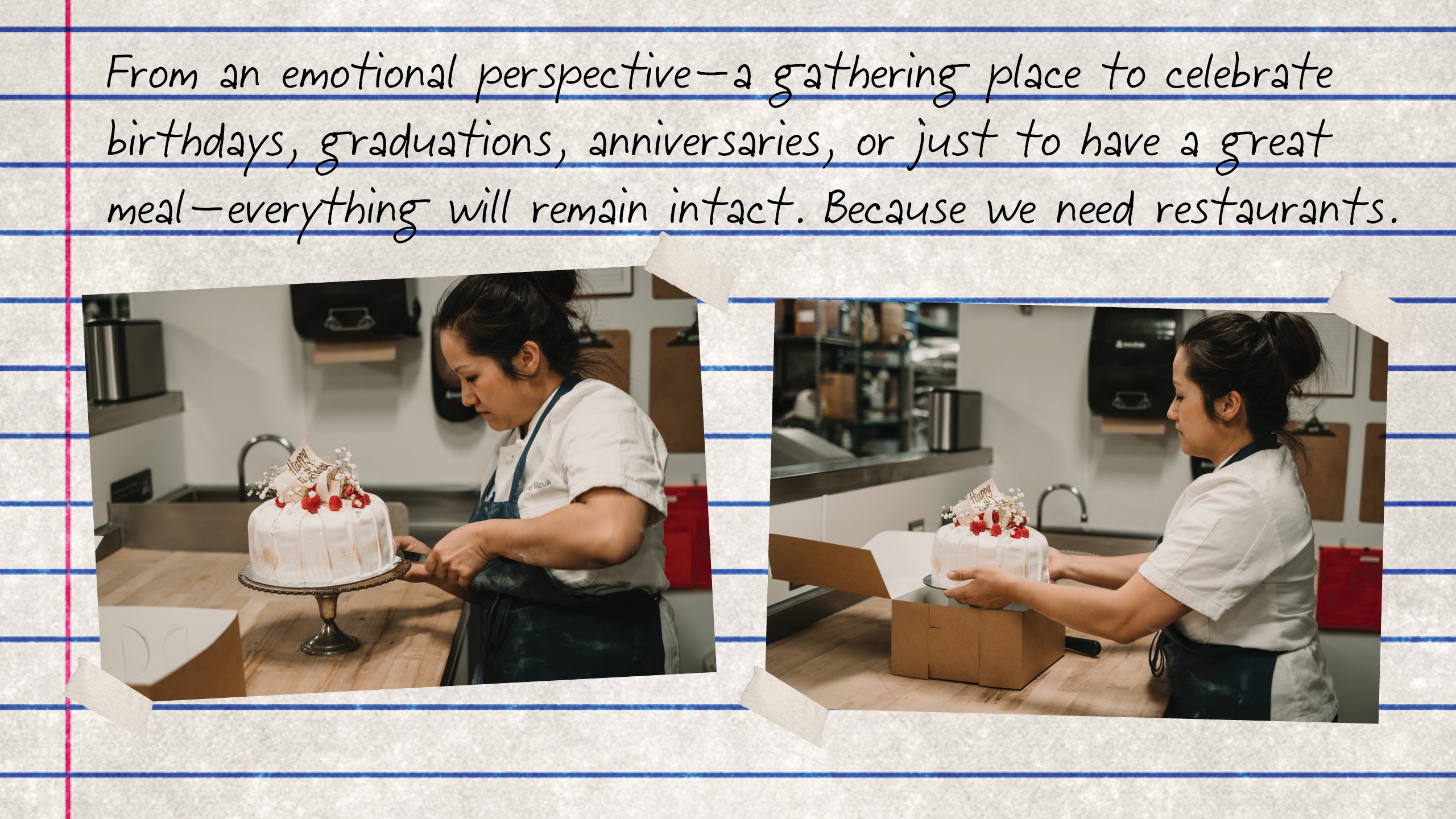
Dave Puente/Nicolas Raymond/Flickr/Graphic by Talia Moore
A new definition of sustainability
There was a very informative national call last week, hosted by the Independent Restaurant Coalition, about asking Congress for a restaurant stabilization fund, a separate program for restaurants. We’re still trying to figure out the payroll protection program—if that ever gets adjusted, great, but if it doesn’t, if it’s a worthless loan, I have to look to see what’s in my bank accounts to open the restaurants. While we’re idling, waiting for more information, we’re talking about this new program. It was an open call, lots of questions from all over the country, and it was nice to have a forum.
If there’s one thing I wish, when this is all done, it’s that we can have these conversations more often than not. We usually only see each other when we do events or go to awards shows.
I talked to Thomas Keller last week, who said something powerful. What’s amazing, he said, is that he’s 65, he’s lived long enough to know what things have changed for him. But you’re 40, he said. Your entire future just changed from what it was three months ago, to whatever it might be. That resonated with me. A lot of what I thought these restaurants would be, what I thought the future would become, has changed.
I know that my restaurants will all look slightly different when I come back, but that’s okay. I still believe that the foundation of how I think about my restaurants, the measures we take to take care of people, will be the same even if they look different. From an emotional perspective—a gathering place to celebrate birthdays, graduations, anniversaries, or just to have a great meal—everything will remain intact.
Because we need restaurants. We should create some kind of inventive shift, as a result of what’s happened. Take what has been a bit of a rogue approach to things and professionalize it. We need to say, this is true: there are layers of complexity to what makes a restaurant.
To be honest, that part is exciting to me. We can write a new future for us.
